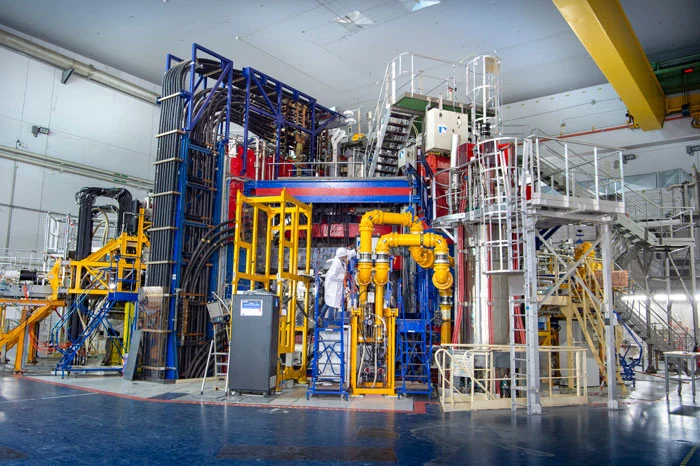Key Takeaways
1. The CEA achieved a plasma duration of 1,337 seconds (22 minutes), surpassing the previous record by 25%.
2. The new technology is expected to use less fuel and produce less radioactive waste compared to traditional fission reactors.
3. Plasma reached a temperature of 50 million degrees, marking significant progress in controlled nuclear fusion.
4. Future goals include extending plasma durations to hours and increasing temperatures for optimal fusion conditions.
5. Challenges remain in stabilizing plasma and ensuring the durability of components facing extreme conditions.
The French Alternative Energies and Atomic Energy Commission (CEA) has revealed a significant achievement in the realm of plasma duration within a nuclear reactor, successfully sustaining plasma for 1,337 seconds. This new benchmark signifies a 25% enhancement over the earlier record established by East in China just weeks ago.
Plasma Duration Achievement
This translates to 22 minutes of plasma held within the fusion reactor before it either dissipated or turned unstable. This innovative technology is expected to utilize less fuel compared to a fission nuclear reactor and generate a reduced amount of radioactive waste, positioning it as a vital component for future energy production.
According to the CEA, the plasma attained a temperature of 50 million degrees, marking significant advancements in the quest for controlled nuclear fusion. This outcome was achieved in a tokamak device, which is commonly utilized in magnetic fusion reactors, and could represent a pivotal advancement for systems like the International Thermonuclear Experimental Reactor (Iter), currently being built in France.
Future Goals in Fusion Research
The Commission aims to reach even longer plasma durations—up to hours—and higher temperatures to meet the conditions essential for fusion plasmas.
“West has achieved a new key technological milestone by holding hydrogen plasma for over twenty minutes while injecting 2 megawatts (MW) of heating power. Experiments will continue with increased power,” stated Anne-Isabelle Etienvre, Director of Fundamental Research at the CEA.
One of the primary obstacles in fusion research is managing the inherently unstable plasma and ensuring the durability of plasma-facing components, which need to endure extreme temperatures and radiation. Researchers at West employ superconducting coils and actively cooled components to foster a stable environment for these long-duration experiments, which will ultimately have to extend to several hours.
CEA’s Progress
On February 12, the CEA’s West machine successfully maintained plasma for more than 22 minutes. This accomplishment broke the previous record for plasma duration achieved with a tokamak. This significant progress illustrates how our understanding of plasmas and the technological control over them is evolving, giving hope that fusion plasmas can be stabilized for longer durations in machines like Iter.
Source:
Link


Leave a Reply